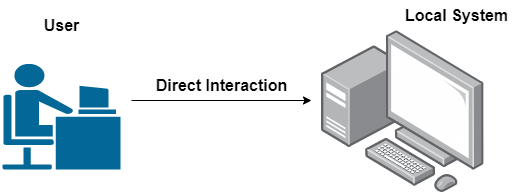1 Tier Architecture in DBMSDBMS Architecture:DBMS Architecture describes how the Database is designed and the way users access the Database. As it aids in the designing of the Database, development of the Database, implementation, and maintenance of the Database Management System, it also has an impact on the Database's performance. When designing a structure, architects organize and create the arrangement of the various parts that make up the entire structure, as well as their connections. The performance of the structure is defined by the architecture, which also dictates the complex's structural integrity and robustness as a whole. In the scenario of the Database Management System, this idea is equally valid. As it aids in the designing of the Database, development of the Database, implementation, and maintenance of the Database Management System, the DBMS architecture has an impact on the Database's performance. The DBMS Architecture serves as the foundation for the Database Management System design. It outlines the organization and connections between users and a particular Database System. For proper operation, Database Management Systems are separated into several levels of abstraction. These modules and layers explain how the DBMS is built and how it works. We can maintain and manage the Database Management System with the applications of different architectures depending on how the user is connected to the Database and accessing the Database, as a Database Management System isn't always available directly by the user or an application. These architectures are defined according to tiers; that is, the number of levels in the DBMS's structure determines which category the DBMS architecture belongs to. A tier is a physical unit where a process or a program is executed. Database servers, application servers, clients, etc., are a few examples. Layers are logical units that deal with how data or code should be structured. Data access, controller, etc., as examples. DBMS is divided into one layer by 1-Tier Architecture, divided into two layers by 2-Tier Architecture, divided into three layers by 3-Tier Architecture, and in the same way by n layers. In the same way, DBMS is divided into n layers by an n-Tier Architecture of the DBMS. The complexity and security of the DBMS structure increase as the number of layers in the design rises, along with the level of abstraction. These layers do not depend on each other. Therefore, changes made to one layer do not affect the other layers that are included in the architecture. 1-Tier Architecture:The easiest DBMS Architecture to understand is the single-tier DBMS design. Because of the DBMS's quick reaction time owing to this direct connection, programmers frequently adopt this architecture to improve local applications. In a one-tier Architecture, the user has direct access to the Database and can use it while sitting at the DBMS, meaning that the client, server, and Database are all on the same system. In this architecture, all the processing is done on a single server, and if there are any changes in the Database, then it is instantly reflected in the actual Database. Additionally, zero network connection is necessary to carry out database operations. The local Database System is another name for this Database Management System. 
Use cases of 1-Tier Architecture:
Example of 1-Tier Architecture:We put up our SQL server and Database on our local machine in order to understand the Structure Query Language (SQL). With the help of this SQL server, we are able to do some operations and interact with the relational Database without the need for a network connection. Single-Tier DBMS design is exemplified by the entire system used to learn SQL queries. Key highlights of 1-Tier Architecture:
Next Topic2 Tier Architecture in DBMS
|
 For Videos Join Our Youtube Channel: Join Now
For Videos Join Our Youtube Channel: Join Now
Feedback
- Send your Feedback to [email protected]
Help Others, Please Share









